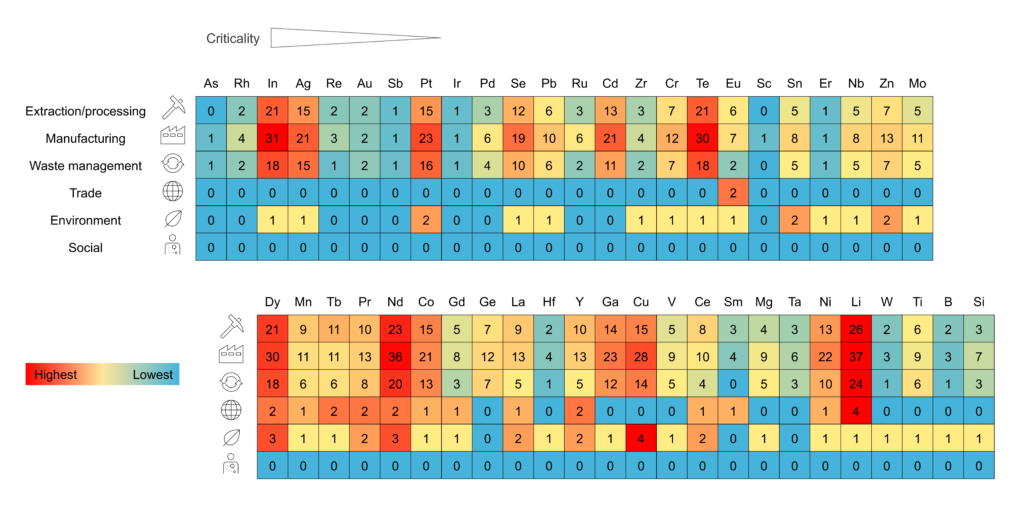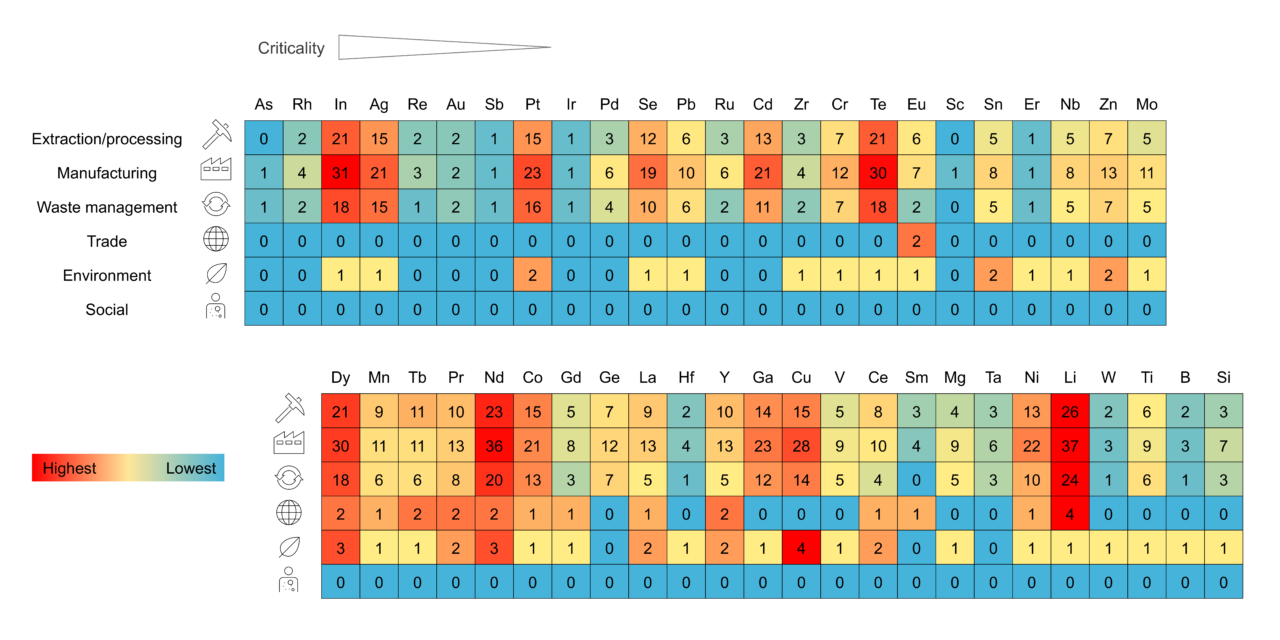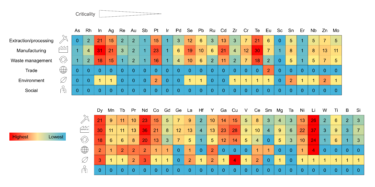
Abstract
Critical metals are technologically vital to the functionality of various emerging technologies, yet they have a potentially unstable supply. This condition calls for strategic planning based on the expected long-term demand and supply of these metals and the implications attached. Here, we provide the first systematic review of studies (88 studies in all) exploring the projected long-term status of various critical materials, covering 48 elements with 546 data points for global demand through 2030 and 2050. Interestingly, results indicate that, to date, no long-term demand outlook is available for some high criticality metals. We also find that the social and environmental implications induced by demand growth are largely overlooked in these studies, resulting in less attention being given to the spatial divergence between consuming and producing countries in the global supply chain. Moreover, circular economy strategies that include component reuse and remanufacturing have been barely incorporated into the modelling frameworks presented in these studies, while end-of-life recycling is heavily focused on. In addition, elemental linkages (e.g., indium-zinc-steel) are underemphasized, leading to a lack of understanding of future availability and sustainable cycles. All of these findings affirm the need for further scientific research that explores the long-term status of critical metals, which strongly connects to the sustainable development goals of the United Nations and implementation of the Paris Agreement.
Authors
Takuma Watari, Keisuke Nansai and Kenichi Nakajima
Journal
Resource Conservation and Recycling, 2020, 155, 104669, Link


